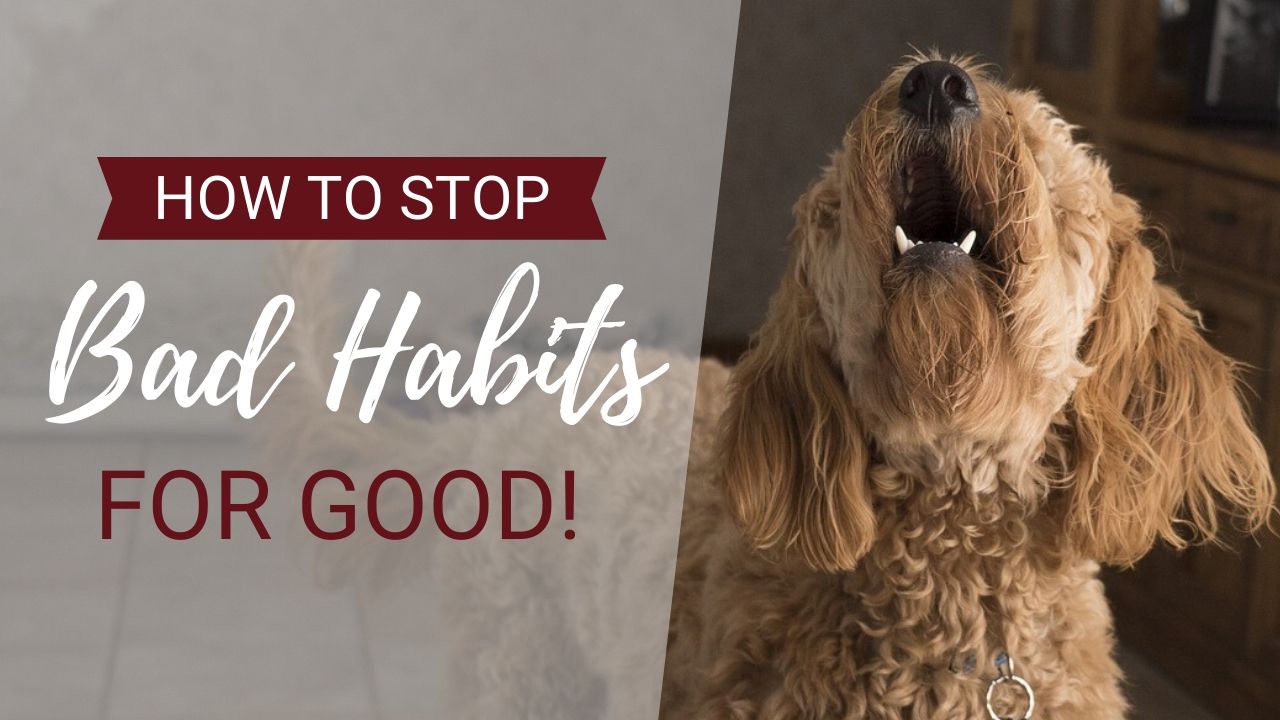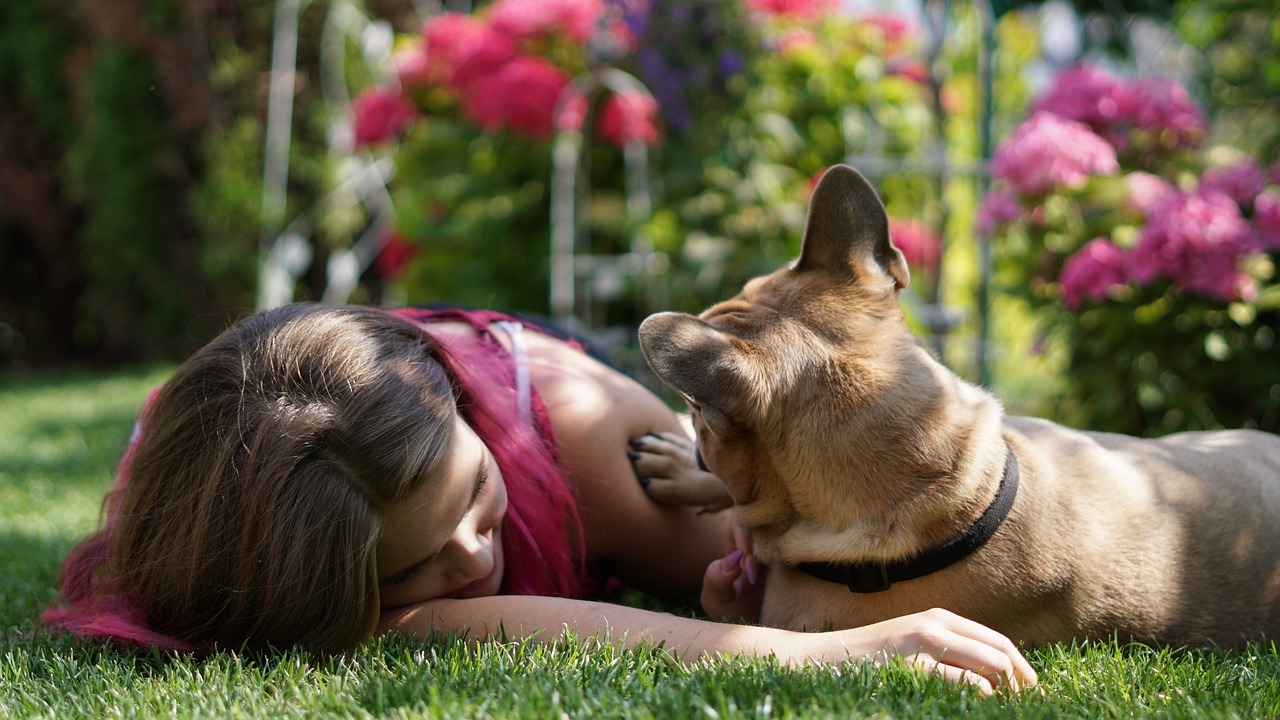How to Stop a Dog From Barking (and Every Other Behaviour That Drives You Crazy!)

It’s one of the most commonly raised dog behaviour problems out there right now – how to stop a dog from barking – but it’s certainly not the only unwanted behaviour that drives dog owners crazy! Luckily, what we are about to explore in this article is not only the reason why your dog is repeatedly barking (and sending you barking mad!) but also the reason your dog seems to repeatedly indulge in all manner of nuisance behaviours… and what you can do to stop it!
In a nutshell, your worst enemy in so many of these problem situations is ‘rehearsal.’ Dogs are ultimately creatures of efficiency… and creatures of habit; throughout all their day-to-day encounters, they will opt for the familiar. In short, dogs will always do what they have always done. The dog who was spooked by the mailman the first time he came to the door, and ran at him barking, is far more likely to repeat this behaviour the next time the mailman visits, than the dog who has never been given the opportunity to rehearse this behaviour.
This is why, when you first bring a new puppy home, you’ll be encouraged to keep a beady eye on their every move, and confine them to their crate during the moments that you cannot do so, in order to prevent the initial rehearsal of any bad habits and behaviours, before they get the chance to establish themselves.
Of course, whilst rehearsal is behind the repetition of bad behaviours, we can also use it to our advantage too. Examples of good rehearsal include a dog who keeps all four feet on the floor in the kitchen, even when food is left out. I own a Labrador Retriever, who could very easily help herself to all manner of delights on our kitchen worktops if she so chose too… however because we have always limited her ability to rehearse counter-surfing as a behaviour, it’s now simply not in her repertoire. She has always rehearsed keeping four feet on the floor in the kitchen, and so, since dogs are creatures of habit, this is now her go-to behaviour in this situation, because she has never had the opportunity to rehearse anything else.
Common examples of bad rehearsal include fence running, barking in the garden (do you have a dog who starts barking EVERY time you let him outside, regardless of whether there’s anything there to bark at?! Rehearsal is most definitely at play here!) pulling on lead, barking at the doorbell… the list goes on.
How Do You Know If Rehearsal is at Play?
Define whether rehearsal plays a part in your dog’s behaviour or not by answering this simple question: do they always do this? If the answer is yes, then rehearsal is almost certainly the key factor responsible! Excessive rehearsal ends up leaving your dog with only one choice in a particular environment or situation; flexibility is lost, and you’ll find them simply unable to respond in any other way to familiar triggers.
What Can You Do About Rehearsal?
The good news is, even if you’ve allowed your dog to consistently rehearse an unwanted behaviour up to this point… the situation is still salvageable! We simply need to find a way to interrupt that rehearsal. At Listen Dog Training, we recommend doing this by teaching your dog ‘the attention noise.’
Teaching The Attention Noise:
Step 1: Toss food out towards your dog.
Step 2: Your dog eats the food.
Step 3: When your dog has finished eating this piece of food, Make your attention noise. Choose a word or sound that you are NOT likely to use in everyday life – opt for something crazy like ‘KAPOW!’ if needs be! We want to make sure that your dog only ever hears this word or sound as an attention cue going forward.
Step 4: When your dog lifts his head and looks back to you, reward!
Step 5: Repeat Steps 1-4 in a few short training sessions, then gradually introduce your attention noise to different situations. Start small, and in situations where success is pretty much guaranteed, i.e. your dog is awake and alert, but not distracted, and there’s not much else going on in the environment. Drop your attention noise and reward as soon as his head turns to you!
Step 6: Eventually you can up the ante – try dropping your attention noise when your dog is engaged in something else… and introducing jackpot rewards (higher value) at random intervals throughout repetitions, to keep value high for disengaging in what he is doing, and giving you attention.
Once you’ve got your attention noise nailed, you can use this to quickly and succinctly interrupt your dog’s rehearsal of an unwanted behaviour, and intercept to take control of the situation without simply telling your dog off, nagging him, or using punishment (which still doesn’t teach him any alternative behaviour to the one you don’t want him to rehearse!)
Remember to use the attention noise as a single interrupter, and then engage your dog in something more appropriate which they can be rewarded for, or remove the opportunity to rehearse the unwanted behaviour altogether. Be careful not to allow your dog to take their reward, and then return to the unwanted behaviour and repeatedly require the attention noise cue… or you will simply end up training them to always threaten the bad behaviour!
Check out our article on How to Reward Your Dog to make sure that you know exactly how to reward the perfect response to the attention noise for optimum results, or read our Ditch the Bowl article and discover how we get away with using SO much food to teach our dogs awesome behaviour!
Control and Management:
Of course, whilst you are trying to distract your dog from rehearsing bad behaviours, you can also introduce management to your dog’s day-to-day routine that simply limits his ability to rehearse these behaviours, too. For example, for a dog that pulls on lead, a harness may be used temporarily to remove that ‘choice’ from your dog’s repertoire, and limit their ability to rehearse it.
How to Stop a Dog From Barking:
If we take barking in the garden as an example of an unwanted behaviour, we need to take control of the situation so that the dog stops rehearsing barking when they go into the garden.
If your dog usually runs out the back door and immediately sounds the alarm, change the routine by engaging in a mini training session by the back door before you open it, with some high value rewards. After a few repetitions, open the back door and step outside, but continue the training!
Whether you’re running through a few position changes (sit – stay- down, for example) or you’re practising your recall, continue the session as you both step out into the garden, and keep your dog’s attention. If you were just practising recall inside, step out into the garden, run a few paces and recall your dog again – if you’ve got him engaged he should follow and seek his reward – and right there you’ve prevented a rehearsal, and got your dog to come into the garden without barking! If he does bark, utilise your attention noise and quickly engage him in an activity or game to prohibit further barking.
The key is to get him to rehearse doing the RIGHT thing, and to prevent him rehearsing the WRONG thing.
Stay vigilant and consistent, and you’ll soon see that you have to put less and less effort into preventing the rehearsal… he’s spent so long rehearsing a quiet entry into the garden, that it’s now his go-to response (and you can befriend the neighbours again!)
Want to really get to grips with tackling your dog’s problem behaviours once and for all? Check out our printable dog training planners and discover how to stop a dog from barking, jumping, pulling on lead and more with an organised approach to your training, and follow us on Instagram and Facebook for daily tips!








